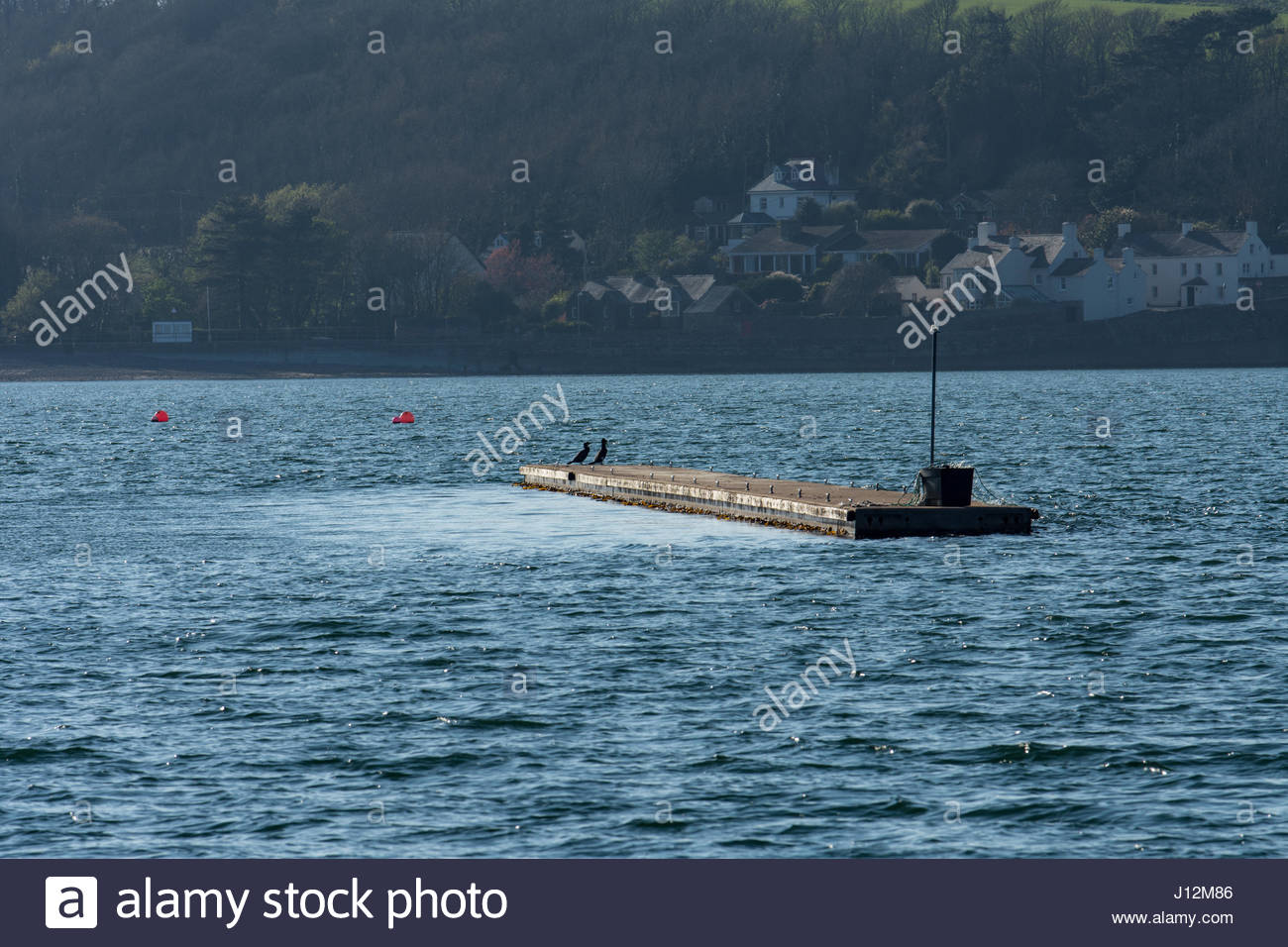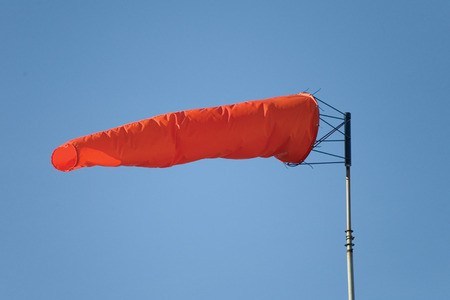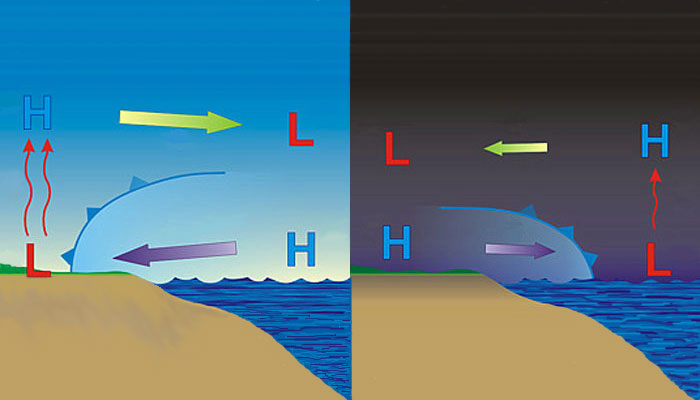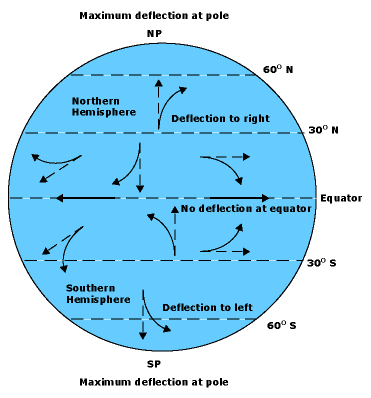State Buys Ballot's Law.
Buys ballot’s law is a matter of common sense
It states that when standing with one’s back to the wind, the area of low pressure is to one’s right in the Southern Hemisphere

Area of low pressure located to the right
State Buys Ballot's Law.
Buys ballot’s law is a matter of common sense
It states that when standing with one’s back to the wind, the area of low pressure is to one’s right in the Southern Hemisphere

Area of low pressure located to the right
Describe how an approximate wind direction can be determined from: a) ripples on water; b) wind lanes on water; c) wind shadow on bodies of water.
a) Wind ripples are always at right angles to the surface wind which means that the direction can be from either side
b) Wind lanes are disturbed streaks of water which flow with the wind, often created by strong local winds caused by funnelling or bending through or around headlands, peninsulas or valleys or they can be forerunners of a general wind change
Wind direction from wind lanes can be easily ascertained because the downwind part of wind lanes spreads in a frayed finger like fashion.
c) If ascertaining the wind direction from ripples on water – look for “shadow areas” sheltered by ground features bordering the water.
This shaded area indicates the direction the wind is coming from.

Describe the limitations of windsocks in New Zealand.
The wind strength will determine the angle at which the wind sock sits.
The stronger the wind, the more erect the sock sits.
Wind sock angle:
30 degrees ….. 8 knots
45 degrees ….. 15 knots
75 degrees ….. 22 knots
90 degrees ….. 25 knots
Generally speaking the most common windsock used is 25 knots.
There is an international standard for windsocks in relation to wind strength as defined by both FAA and ICAO
In NZ there are many different types of windsocks installed at airfields. Different windsocks can behave differently in terms of wind speed
Some cheaper windsocks are made from unspecified materials so may perform less accurately

Describe the changes in wind velocity when climbing out of, or descending into, the friction layer.
In relatively flat country the day-time surface wind will be
– 2/3 of the 2000 ft mean wind speed
– Gusting to the mean 2000 ft wind speed and
– Veered by 30 degrees from the mean 2000 ft wind direction
As you climb through the friction layer the wind will back by about 30 degrees and increase in strength until you reach the top of the friction layer. You will probably experience some light to moderate turbulence which will cease once you ascend through the top of the friction layer, even though winds speeds may continue to increase
On descending through the friction layer, the process is reversed. You will begin to encounter some turbulence, which is the first indication you have descended into the top of the friction layer. The wind strength will gradually decrease as you descend and the wind direction will veer by about 30 degrees during the descent
When the friction layer is dense, the surface wind is reduced and crosses the isobars at 30 degrees, there will be a sudden change when the aircraft climbs out of the layer
In Southern Hemisphere
The wind backs and increases in a climb as the friction layer is vacated
The wind veers and decreases during a descent
Describe the diurnal variation of the surface wind over the: a) land; b) sea.
a) Land:
Over land, wind strength near the earth’s surface tends to reach a maximum in the afternoon, when maximum gustiness is likely to occur as the stronger wind at the top of the friction layer is dragged briefly down by frictional tumbling.
At night the air in contact with the cooling ground cools through conduction which can result in a surface inversion or isothermal layer forming. This stable layer decouples the surface winds from the stronger winds at the top of the friction layer. Surface wind decreases and may become calm
The surface wind veers and decreases at night
By day as the land heats up again, the stable layer breaks down resulting in more vertical exchange and a deepening of the friction layer. The faster air aloft mixes readily down to the surface so that surface winds increase and back towards the geostrophic direction
The surface wind backs and increases during the day
b) Sea:
Over the sea this effect is very slight because the sea temperature, unlike land does not vary much diurnally

Define the following terms: a) gust; b) lull; c) squall; d) veering; e) backing.
a) Gusts are momentary increases in wind speed
“Gustiness” includes both gusts and lulls
Gusts are associated with turbulence which may be small scale as a result of trees and buildings or large scale due to rough or mountainous terrain
b) Lull is the period of calm between gusts.
c) Squalls are rapid increases in wind speed, which last for some minutes then die down
They may be produced by the passage of individual cumulus clouds or thunderstorms or by the passage of frontal systems.
Definition of a squall –
i) Wind must reach a speed of at least 22 knots
ii) It must increase by at least 16 knots
iii) Must last for at least one minute
d) The wind is Veering when it changes it’s direction in a clockwise fashion
When the wind veers, it also has a tendency to decrease in strength
e) The wind is backing when it changes direction in an anticlockwise fashion
When the wind backs, it has a tendency to increase in strength
Explain how the friction layer affects the surface wind velocity.
Friction is proportional to surface roughness and acts opposite to the wind flow direction.
the friction layer has the effect to slow the surface wind velocity.
The Pressure Gradient Force is not affected by friction however Coriolis Force is. Coriolis Force is proportional to wind speed, so as friction causes wind speed to reduce the CF must also reduce

Describe the elements that influence the depth of the friction layer
The friction layer is determined by the roughness of the underlying surface and the speed of the wind blowing across it
Ocean – exerts little frictional drag on the wind not only because waves aren;t that big, but also beacuse the wave tend to travel with the wind and offer less resistance
Land mass – there is no give in the surface features, so trees, buildings hills and mountains have a much greater slowing effect on the wind. The turbulence generated by the wind flow affects a deeper layer of the atmosphere – to as much as 15,000 ft or more over large mountain ranges
Explain what is meant by the "friction layer"
The surface of the earth exerts a frictional drag on the wind flowing over it
Due to drag caused by irregularities such as hills, mountains and buildings, the speed at which the wind blows over the surface is slowed.
The tumbling, turbulent layer within which this slowing down occurs, is called the Friction Layer

Explain how the inter-relation between pressure gradient and Coriolis force determines the circulation around pressure systems.
The pressure gradient attempts to push air from the centre of the high to the centre of the low.
Coriolis force opposes pressure gradient, and acts towards the centre of the high.

When these two forces are exactly equal and opposite, the wind blows on a straight path along the isobars.
When coriolis is stronger than pressure gradient the wind curves anticlockwise around a high
When coriolis force is weaker than the pressure gradient the wind curves clockwise around a low